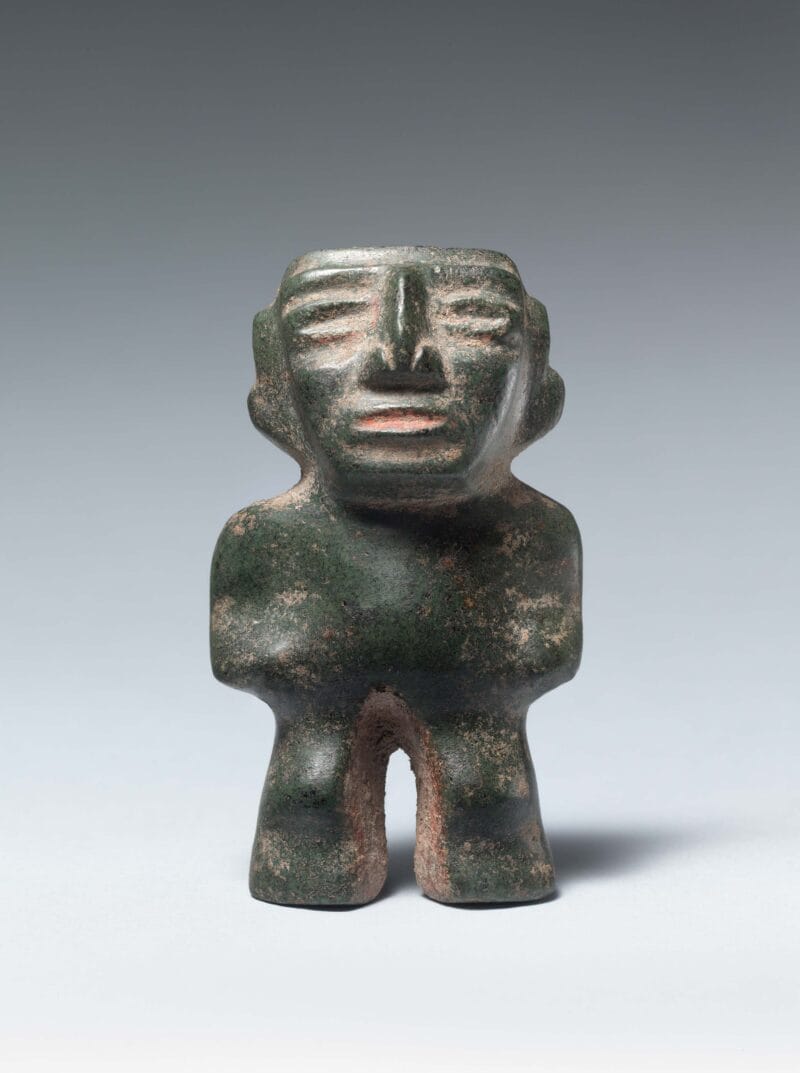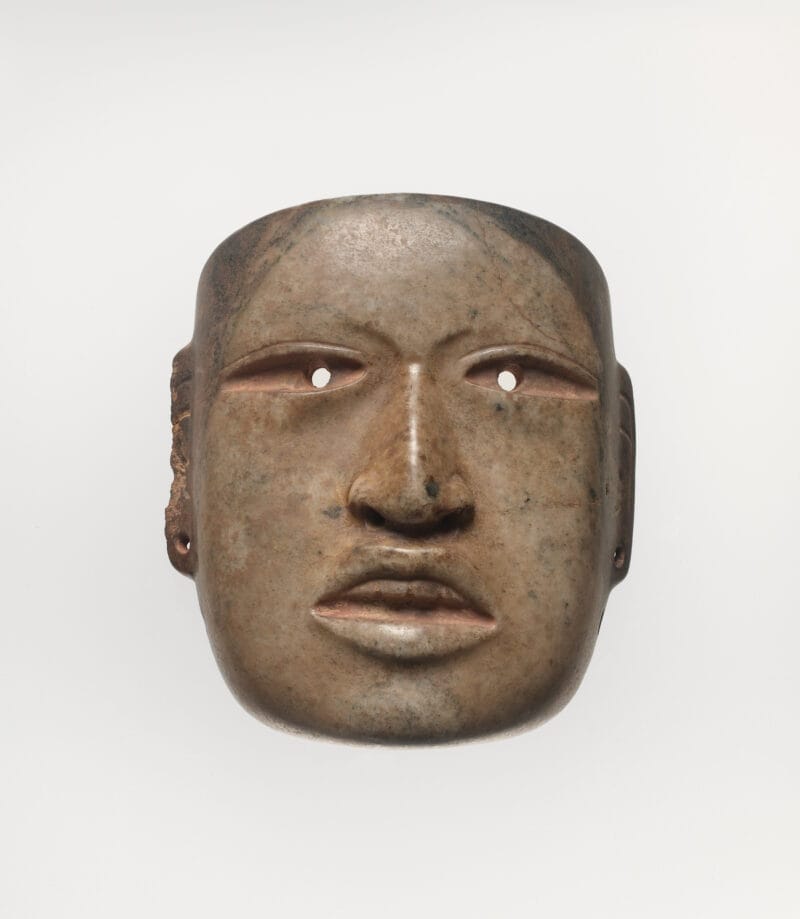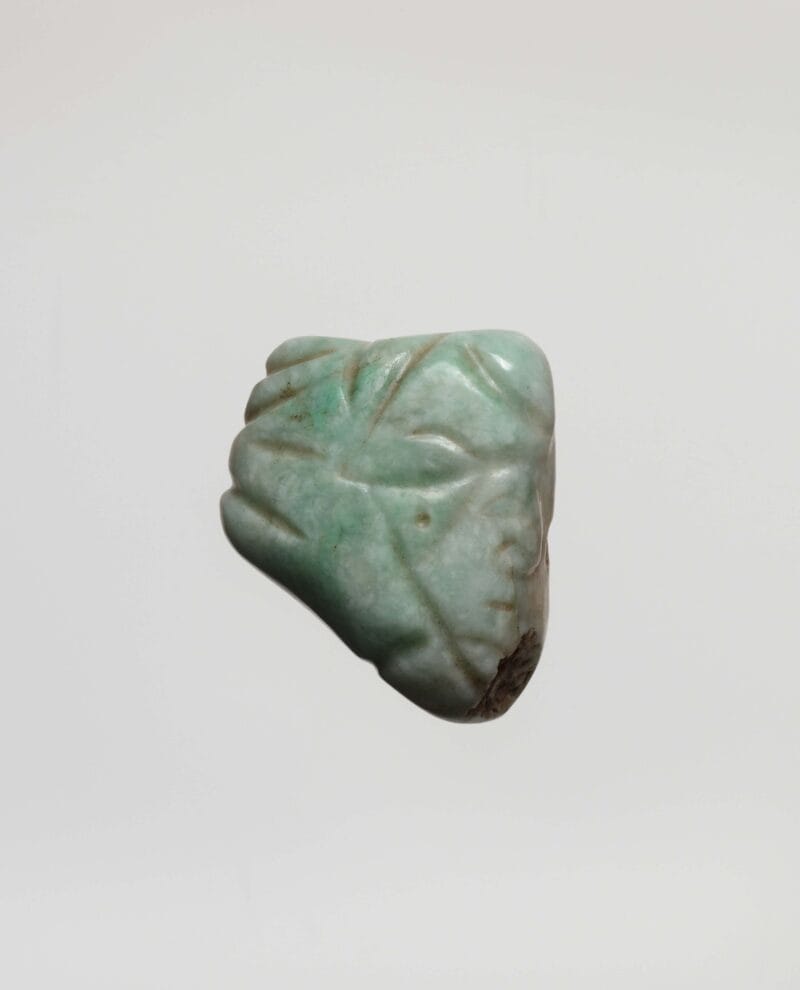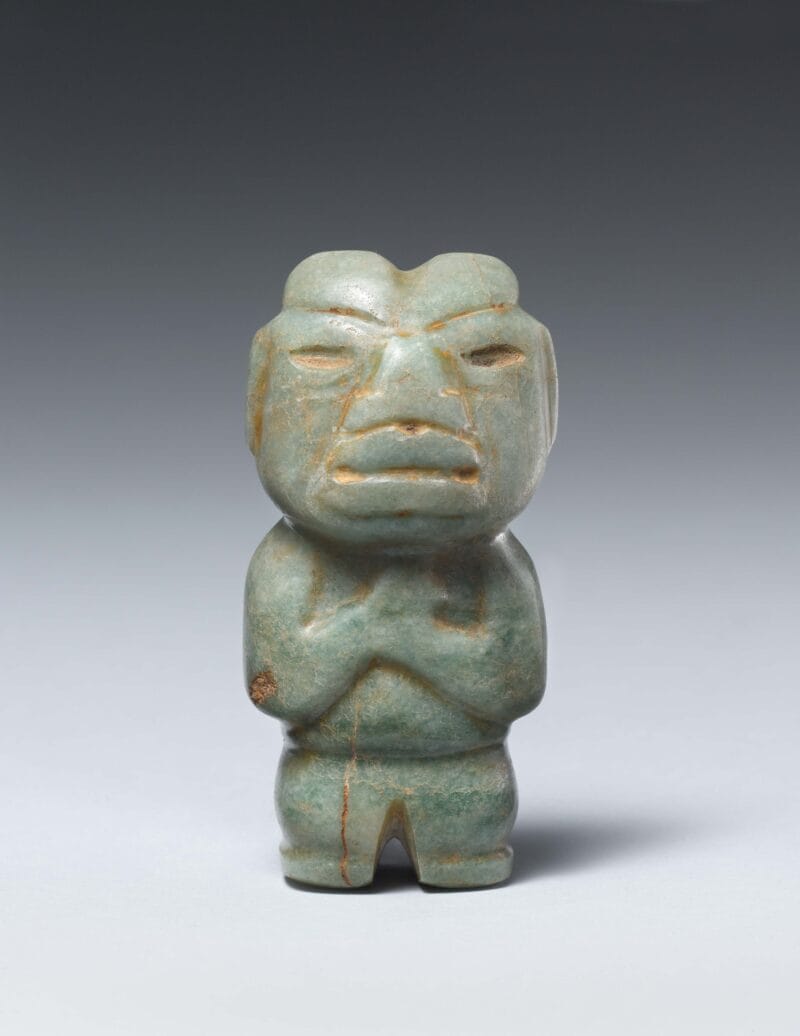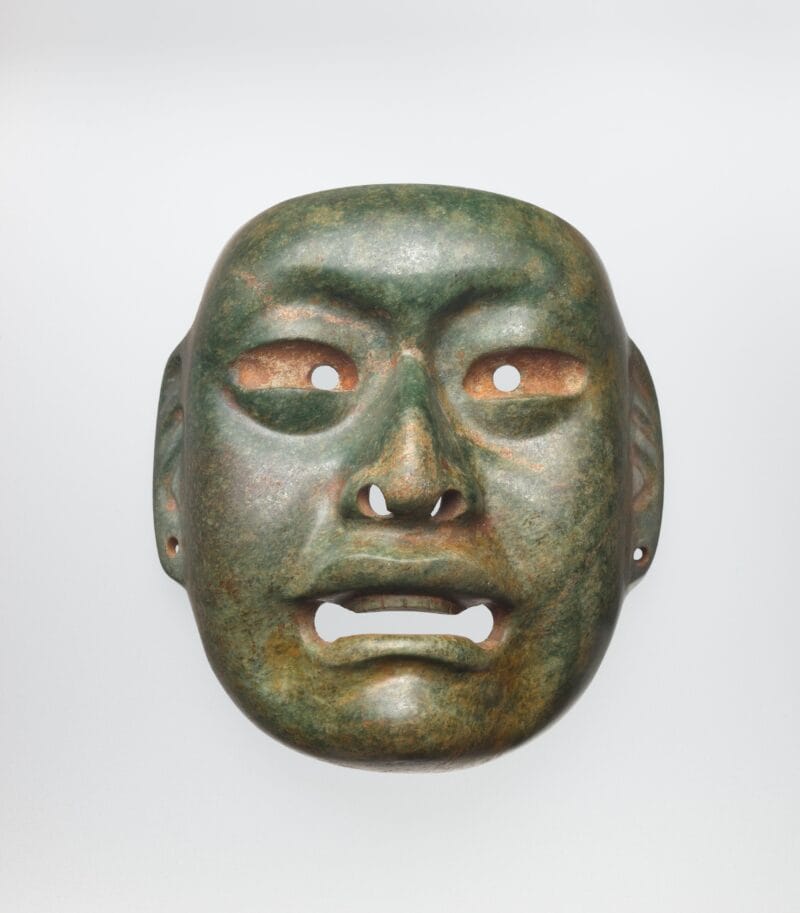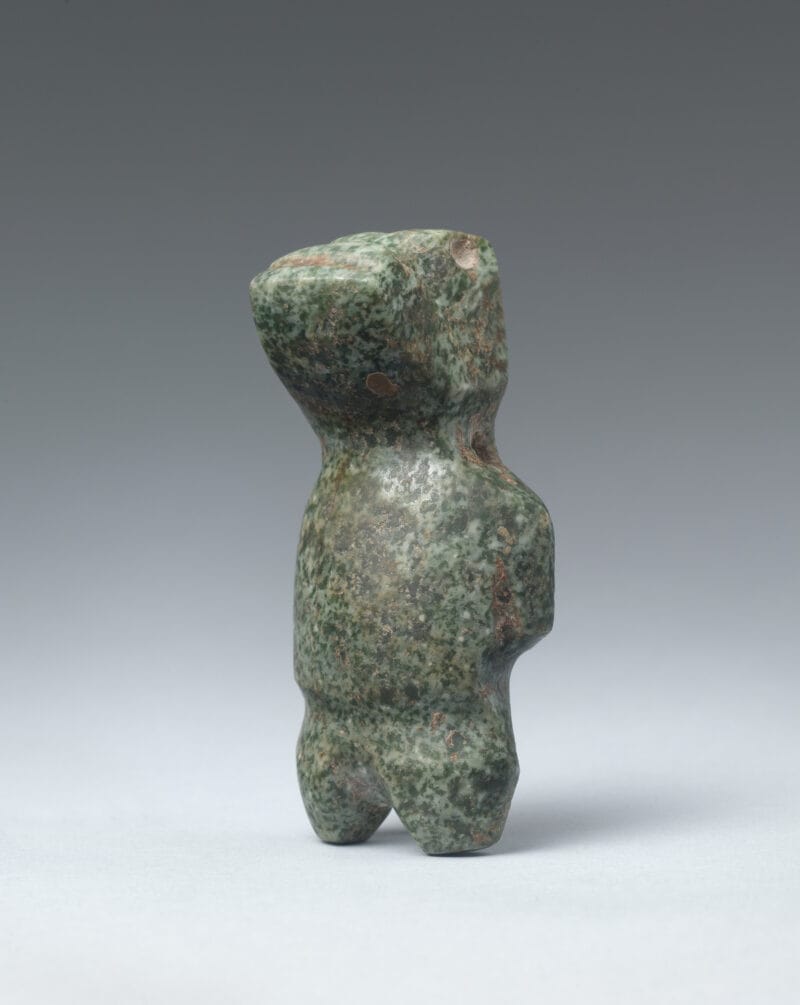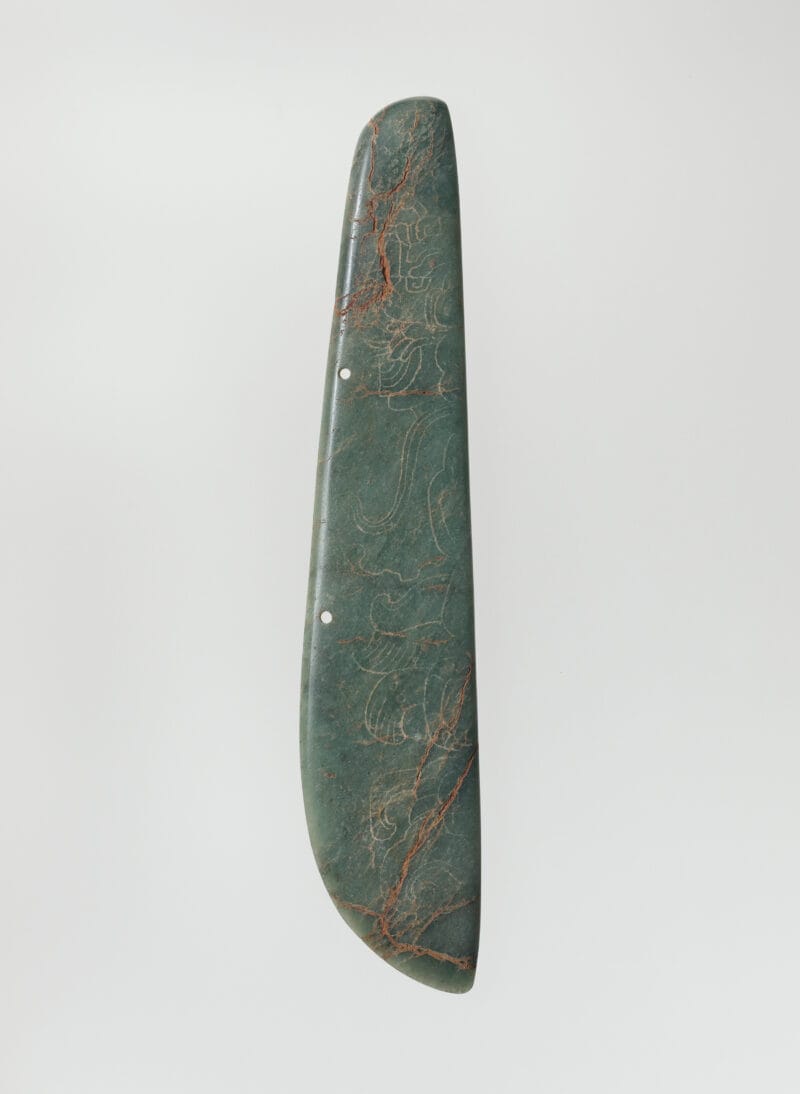
About the Object
An unknown Mayan artist or group of artisans carved, polished, and incised this plaque from dark green jade stone. Similar to many such works, this object is likely recycled from an even more ancient Olmec celt, or hand axe. This particular half-celt shows a line-engraved anthropomorphic (or human/animal) figure who wears an elaborate feather headdress and what may be flowing garments. Such objects were generally reserved for the most elite (royalty, nobility, and/or powerful religious figures) as jade was considered more precious than gold or any other earthly commodity.
Additional Information
The ancient Maya occupied the southern part of Mexico and some areas of northern Central America from approximately 2000 BCE until about 1520 CE. The Olmec tradition developed in the western part of the Mayan cultural area between 1200 BCE and 300 BCE. Both cultures viewed these objects with great reverence as they were linked to notions of fertility and agricultural surplus, upon which these societies were founded and which ensured legitimacy and popularity to rulers. Therefore, these jade objects can be viewed as similar to currency and were exchanged among elites, but with far greater spiritual implications that allowed the very universe and all life in it to continue.
[Throckmorton Fine Art, New York, NY];
The Jan T. and Marica Vilcek Collection, 2006-2010;
Gift to The Vilcek Foundation, 2010;
Related Objects
You may also be interested in
Nari Ward: Home of the Brave
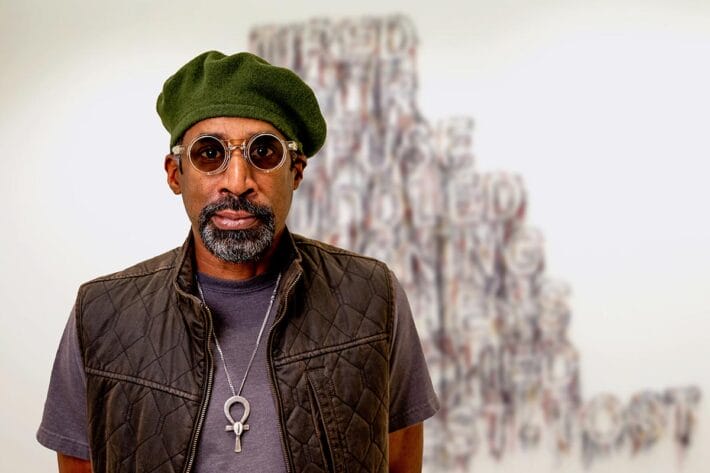
Nari Ward: Home of the Brave

Nari Ward



